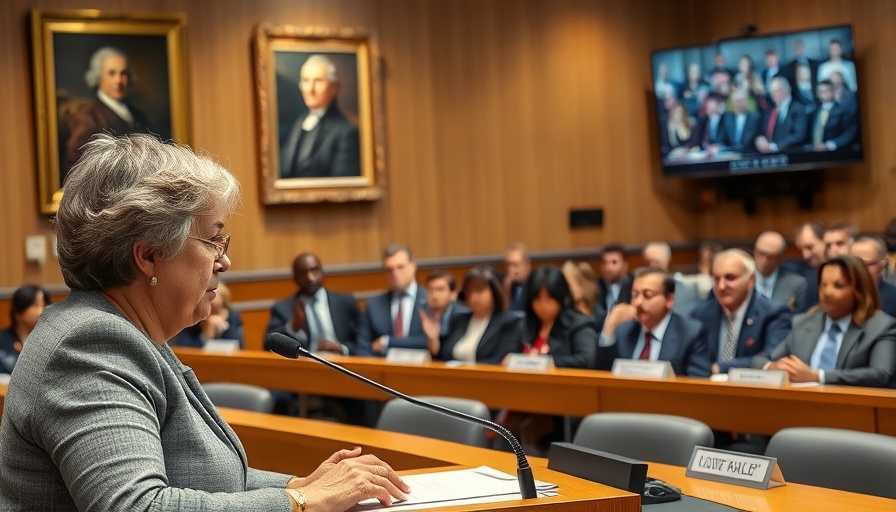
Understanding the Rising Concerns of Antisemitism on Campuses
In a charged atmosphere, recent testimony by college presidents, including Haverford College's Wendy Raymond, spotlighted the growing antisemitism crisis in U.S. education. This session, led by the U.S. House Committee on Education and Workforce, marked a notable uptick in federal scrutiny over how colleges handle such issues, reflecting a broader concern among lawmakers about antisemitism becoming ingrained across various educational settings.
Why Haverford College Became the Focus of Criticism
During the hearing, Rep. Elise Stefanik expressed frustration at President Raymond's inability to disclose the number of students disciplined for antisemitic conduct, directly challenging the college’s commitment to combating this issue. As one of the smaller liberal arts colleges in Pennsylvania, Haverford's responses are under particularly intense scrutiny against the backdrop of escalating reports of campus antisemitism since the October 7, 2023, Hamas attack on Israel. The pressure from the GOP stems from a narrative that positions college administrations as failing to protect Jewish students.
The Political Landscape: GOP's Strategy to Address Antisemitism
This Congressional hearing aligns closely with a strategy by Republican lawmakers to penalize colleges perceived as ineffective in addressing antisemitism. Chairman Tim Walberg's assertion that “antisemitism is proliferating at colleges across the country” serves as a call to action aimed at ensuring federal funds are contingent upon more robust policies against hate speech and harassment. This approach has already led to significant financial repercussions for institutions that do not conform, such as Harvard University.
The Broader Context: Antisemitism's Historical Roots and Current Trends
Antisemitism is not a new phenomenon in America; it has a long history marked by cycles of prevalence and decline. The rise of antisemitism on campuses can be seen as part of a disturbing trend fueled by global conflicts and a polarized political landscape. For many students, especially Jews, these tensions manifest in hostility or discrimination, whether in physical or ideological forms.
Interpreting the Events: Haverford's Reaction
In her testimony, President Raymond addressed recent events on Haverford's campus that were inconsistent with the college's commitment to diversity and inclusion. While she apologized to the Jewish community for these developments, her lack of specific details regarding actions taken against offenders raised eyebrows among lawmakers. Critics argue that vague acknowledgments do little to assuage fears or build trust within communities affected by antisemitism.
Implications for Monthly Reports and Future Hearings
This session is not merely an isolated incident, but rather an indication of ongoing Congressional oversight. Future hearings may delve deeper into how colleges can establish effective measures against antisemitism, with a focus on accountability. This may include legislative proposals that force colleges to disclose data regarding hate incidents and instill more stringent educational requirements concerning antisemitism.
Community Reactions: Pennsylvanians Weigh In
For Pennsylvania residents, this issue hits home deeply. The discussions surrounding Haverford College's handling of antisemitism resonate with the broader community, which has historically prided itself on religious tolerance and educational integrity. Responses from local stakeholders range from calls for more judicial oversight on college campuses to a demand for better educational programs that sensitize students to issues of bias and discrimination.
The Path Forward: Building a Safer Educational Environment
As lawmakers navigate how best to address these issues, collaboration with educational institutions will be vital. Creating a more inclusive environment that actively combats antisemitism requires ongoing dialogue, policy changes, and community involvement. This path forward may not be easy, but it reveals an essential commitment to maintaining a healthy discourse in educational environments.
 Add Row
Add Row  Add
Add 




 Add Row
Add Row  Add
Add 

Write A Comment